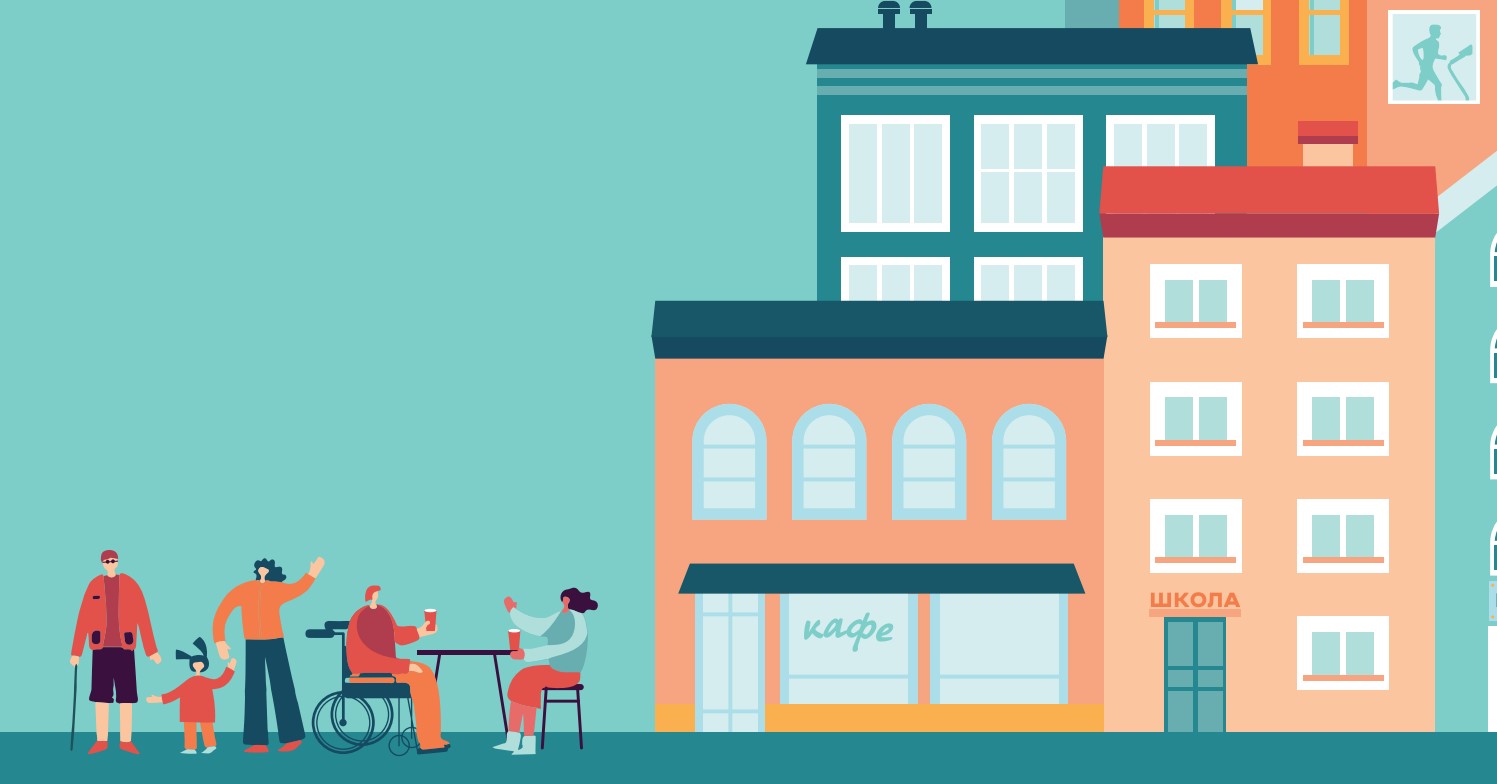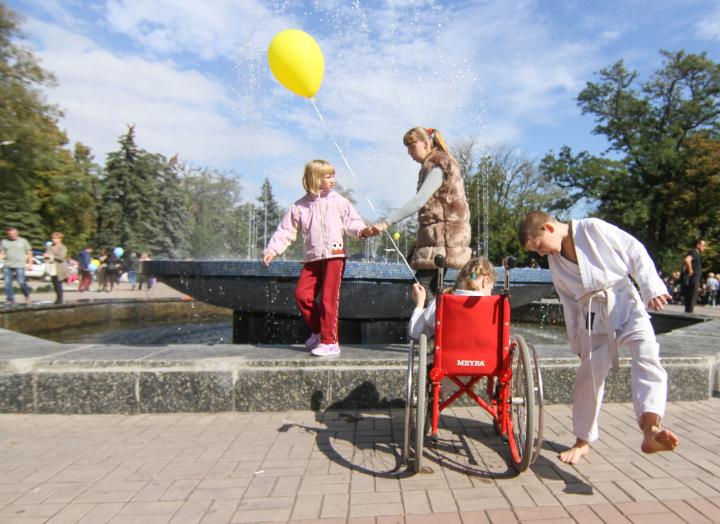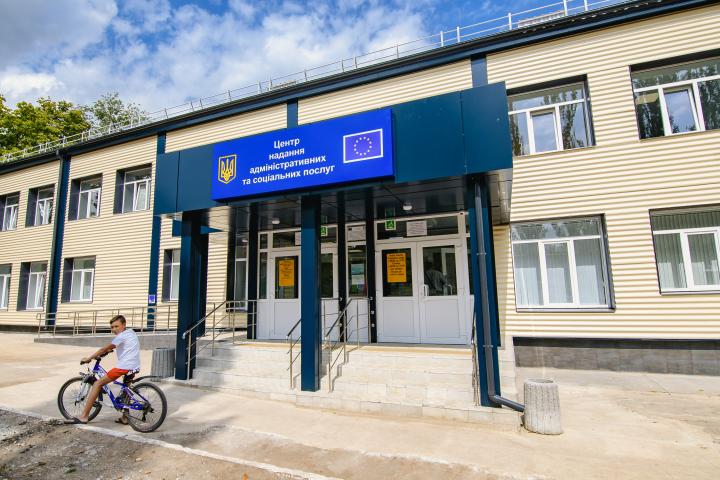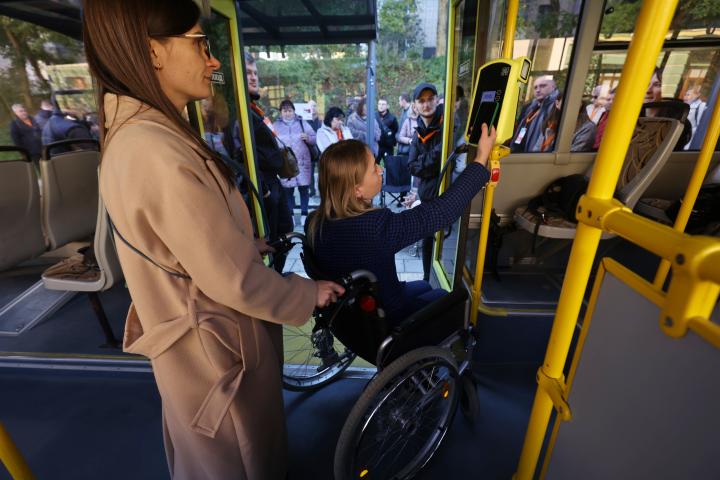Services without barriers: how to begin?
December 10, 2023

In our daily lives, we frequently engage with a variety of public services, ranging from Administrative Service Centres and educational institutions like universities and schools to more casual settings like museums and coffee places, not to mention public transportation. Given this wide spectrum, ensuring the accessibility of these services is crucial. But why is this so important? How does accessible design in public spaces contribute to upholding fundamental rights for all users, and is it truly feasible to create barrier-free environments in these settings? This article delves into these questions, offering insights into the significance of accessibility and providing practical tips for initiating efforts towards making public services universally accessible.
1. Every person is important
Often, when we hear the terms "accessibility" or "barrier-free environment," we associate them with people with disabilities who use wheelchairs because we think that they are the ones who need accessibility when, in fact, everyone needs it.

Photo: UNDP Ukraine
If you are a mom or dad with a baby in a stroller or have a temporary injury, you prefer to use a ramp over the stairs. If you are a person of short stature, it may be difficult for you to reach the shower in a hotel room if it is mounted too high. If you have ever travelled with a suitcase on wheels or a bicycle, you know that curb cuts on a sidewalk will allow you to move around more comfortably. If you are a person with visual impairments, you may be unable to use some digital services and will have to wait in long queues. We should also keep in mind that sooner or later, people become older and, therefore, less mobile. So, at some point or throughout our lives, we all need accessibility.
The ultimate beneficiaries of public services are people. Everyone's needs are important. Even if a parent with a baby in a stroller uses your services once a month, they should still be able to get into the building without obstacles using a ramp that complies with the requirements. Even if there are only two people with visual impairments among 100 visitors to your website, they should be able to find out the information themselves with the help of a screen reader, and not ask for assistance.
The United Nations Development Programme (UNDP), within the "Services without barriers" training sessions, with the financial support of the UK government, has developed information booklets (in Ukrainian) for providers of public services; in the booklets, you can find out more about accessibility, barrier-free services and correct terminology.
2. Words are important
Correct communication and terminology are just as important as ensuring accessibility. The terms still often used are discriminatory; for example, in Ukrainian, previously in use was the word "invalid" in the English language has different meanings, one of which is "incorrect." So, by calling someone like that, we refer to them as “incorrect”.
So, how do you speak correctly? There are two simple rules:
1. Use person-first language;
2. Call everything by its name.
So, the person is always in the first place, and then their diagnosis or any other characteristic.
For example, Not "Down’s child" but "child with Down syndrome," not "deaf," but "person with hearing impairments."
If you are in doubt about whether a term is correct or not, you can use the Barrier-free guide, an electronic version of the glossary (in Ukrainian). It works like Google; you can enter a specific term and find out if it is used or understand which term is correct to use. The guide was developed at the initiative of the First Lady of Ukraine, Olena Zelenska.
3. Architectural accessibility is important
To make public services and the places where they are provided accessible, it is necessary to remove certain barriers: physical and informational. Sometimes, we do not know how to start and end up creating new obstacles.
Five years ago, updated State Building Norms "Inclusiveness of buildings and structures. Main provisions” (in Ukrainian) was adopted and became mandatory in Ukraine. This document contains all the requirements to make the premises where the services are provided accessible.

Photo: UNDP Ukraine
Here are two simple examples of why becoming familiar with and using these building norms is important before any repair work begins on the premises. If instead of a ramp at the entrance, there are placed two metal rails, this does not mean that the building has become accessible, on the contrary, it only increases additional risks of injury, because the rails are too steep; if they are mounted to the stairs or if ice forms on them in the cold season of a year. In addition, all wheelchairs come in different sizes, just like strollers, for example, a stroller for twins will differ in size from a stroller for one child, while the distance between the rails remains the same.
Another example is parking spaces. A parking space designated for a person with disabilities cannot be the same size as all other spaces in the parking lot. Besides, it should be located no further than 50 meters from the entrance to the building; it should be larger (width - at least 3.5 m, length - at least 5 m, and the passage zone between cars at least 1.5 m). That is because a person who uses a wheelchair needs to get into it, so, if the parking space is not the right size and the nearby car is parked very close, they will not be able to do this.
The above situations are quite common, and they could be avoided if the contractors considered the State Building Norms.
Another example is parking spaces. A parking space designated for a person with disabilities cannot be the same size as all other spaces in the parking lot. Besides, it should be located no further than 50 meters from the entrance to the building; it should be larger (width - at least 3.5 m, length - at least 5 m, and the passage zone between cars at least 1.5 m). That is because a person who uses a wheelchair needs to get into it, so, if the parking space is not the right size and the nearby car is parked very close, they will not be able to do this.
The above situations are quite common, and they could be avoided if the contractors considered the State Building Norms.
4. Digital and informational accessibility is important
The world has changed a lot with the advent of the Internet. We are used to solving many questions in a few clicks, but this is not possible for everyone.
People who have completely lost their vision or have a tiny percentage of residual vision can use a screen reader. This special programme reads information from a computer or phone screen. However, for the reading to be correct, the website must be accessible, and there is a way to make it so.
The Ministry of Digital Transformation of Ukraine and UNDP, with financial support from Sweden, created an online course on web accessibility for civil servants. You can take the course free of charge on the Diia. Digital education portal. It consists of 10 short series where you can learn about digital assistive technologies used by people with visual impairments, font colours and contrast, tips on creating easy-to-read texts and more.
You can also check your website for accessibility using the web checker and, afterwards, get recommendations on what exactly needs correction. The initiative was developed by the NGO "Institute of Innovative Governance" and is supported by UNDP with the financial support of the government of Japan. The organization can also provide advice on the accessibility of your website; for this, you should fill out the online form.
5. Educational and economic accessibility is important
Educational and economic accessibility are closely related; without one, there will be no other.
Inclusive education in Ukraine has been implemented for a long time and combines both informational and architectural accessibility, as mentioned above. However, here, it is worth mentioning separately the importance of education in the context of war and how many people, both adults and children, have injuries caused by war. For some, these are temporary injuries, and for others, they are permanent. People will learn to live in their new condition, perhaps getting another education or retraining to pursue a different profession, because their injuries will no longer allow them to do the work they did before the war. Therefore, it is essential to promote educational services and employment, because only after getting an education and a job can a person become economically independent, take care of himself/herself, and fulfil their potential.
UNDP supported the creation of a cost-free online platform Start.Business that contains several video courses (in Ukrainian), where you can learn about various opportunities for opening your own business and how to minimize the possible risks associated with it. The platform was developed with the financial support of the European Union and the Government of Poland.
Accessibility is a tool for ensuring basic human rights
When we decide in favour of accessibility, we first decide in favour of the person and secure their rights. Sometimes this person is me; sometimes it is my child, sometimes it is a classmate of my child, my friends - a young family with a baby, a friend of a friend whose injuries were caused by war, my neighbour - an elderly lady.
When a person is studying, and we adapt certain material to their needs, we allow them to get an education and a job in the future, thus ensuring their right to education and work.
When we equip platform lifts in museums and ramps in cafes, we ensure the human right to participate in the cultural life of society freely, as well as the right to rest and leisure.

Photo: UNDP Ukraine
When we equip a more spacious voting area at polling stations, where a person can enter with a baby stroller, a booth with a low table for a person in a wheelchair, or develop a ballot printed in Braille, we ensure people's right to vote.
By creating a barrier-free environment, we not just provide a person free access to something; we guarantee them the right to use public services equally with everyone else.
The movement towards accessibility is a process, and we as a society are interconnected in this process. There are many people who need a barrier-free environment, so accessibility should not be the exception but the norm.
* * *
The article was prepared within the "Services without Barriers" training, organized by the United Nations Development Programme (UNDP) as part of the project "Strengthening Community Resilience in the Regions of Ukraine" with financial support from the UK Government and in partnership with the Lviv City Council and the Lviv Oblast State Administration. Find out more in a video.
Authors: Nina Matsiuk, an expert on inclusivity and accessibility; Marta Nykolayeva, Communications and Outreach Analyst, UNDP

 Locations
Locations



